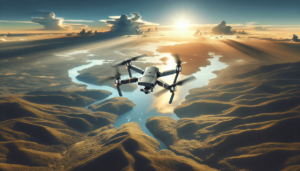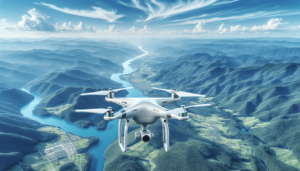Do you remember the days when, to snag a bird’s-eye view of anything, you’d either must persuade a bird to strap on a camera or physically sprout wings yourself? Those were the good ol’ impractical times. Fast forward to today, and technology has handed us the keys—or rather, the propellers—to effortlessly soar above, capturing stunning images with drones. Now, as we stand amidst an overwhelming variety of drones, how exactly do we choose the best one for our aerial photography ventures? Let’s walk through this fluttering sea of possibilities together.
![How To Choose The Best Drone For Aerial Photography [Step-by-Step] How To Choose The Best Drone For Aerial Photography [Step-by-Step]](https://droneaperture.com/wp-content/uploads/2025/02/how-to-choose-the-best-drone-for-aerial-photography-step-by-step-1024x585.png)
Understanding What We Need from a Drone
Before we throw ourselves into the nitty-gritty of drone specs, it’s essential to outline what we hope to achieve with our drone. Our purpose dictates the features we should prioritize, whether it’s snapping still images, filming cinematic videos, or scouting landscapes. Once we’ve identified our top priorities, we’ll have a much clearer vision moving forward.
Defining Our Photography Goals
Do we want to capture vivid sunsets, or are we aiming to record high-speed sporting events? Different goals require different capabilities. For instance, stunning stills of nature might require a camera with a high megapixel count, while fast action shots might need a drone with superior speed and stability features.
Analyzing Budget Constraints
It’s common knowledge that drones can range from surprisingly affordable to outrageously expensive. Setting a budget beforehand helps to define our shopping boundary. This prevents us from draining our savings eyeing luxury models whose features we might never fully utilize.
Evaluating Drone Camera Specifications
What sets an aerial photography drone apart from its flying brethren is its camera. Therefore, understanding camera specifications is crucial.
Megapixels and Resolution
While a higher megapixel count doesn’t always equate to better quality, it often means our images will be more detailed and can be printed larger. A resolution of 4K or higher is often recommended for both photo and video to maintain quality.
Shutter Speed and Aperture
A drone with adjustable shutter speed and aperture gives us ample control over exposure, allowing us to adapt to varied lighting conditions. Faster shutter speeds are great for capturing sharp images of moving objects, while aperture adjustments can help in low-light photography.
Examining Flight Capabilities
A top-notch camera isn’t terribly useful if the drone can’t fly well. Hence, evaluating flight capabilities is a crucial step in our decision-making journey.
Battery Life and Range
Imagine capturing a perfect shot, only for the drone’s battery to give out prematurely. To avoid such heartbreaks, we should prioritize drones with extended battery life. Ideally, our drone should allow at least 20-30 minutes of flight time. Also, a decent range ensures it can travel far enough to capture those hard-to-reach panoramic vistas.
Stability and GPS Features
Built-in GPS and enhanced stabilization features ensure our shots are steady even in less-than-ideal weather. These features make it easier for our drone to hover in place or return safely if we lose sight (or control).
Speed and Agility
A drone’s speed and agility determine how well it can keep up with moving subjects or adjust mid-air. For action-packed photography, models that offer high responsiveness and quick speeds will be indispensable.
Considering Portability and Convenience
While some drones are fantastic at capturing quality images, they might be bulky or cumbersome. Our decision hinges partly on how portable we need our drone to be.
Foldable Design
Drones with a foldable design are exceptionally convenient for those of us who travel frequently. They fit snugly into our backpacks without demanding excessive storage space.
Weight and Size
Lightweight and compact drones are easy to carry and deploy, whereas heavier drones might offer better stability in windy conditions. It’s about finding the sweet spot that aligns with our travel habits and shooting needs.
![How To Choose The Best Drone For Aerial Photography [Step-by-Step] How To Choose The Best Drone For Aerial Photography [Step-by-Step]](https://droneaperture.com/wp-content/uploads/2025/02/how-to-choose-the-best-drone-for-aerial-photography-step-by-step-1-1024x585.png)
Looking into Smart Features
Advanced smart features can significantly enhance the drone’s usability and our overall shooting experience.
Obstacle Avoidance
There’s something to be said for peace of mind. Drones equipped with obstacle avoidance tech dodge trees, buildings, and other pesky impediments, minimizing mishaps during flight.
Follow-Me Mode
For those solo adventures where we’re both the photographer and the subject, drones with a follow-me mode can autonomously track and capture our movements, leaving us free to engage with our surroundings.
Waypoint Navigation
This feature allows us to pre-plan specific routes for our drone to follow. By setting waypoints, we can ensure our drone captures every desired angle of a location, efficiently and effectively.
Assessing Brand Reputation and Support
The last thing we want is to end up with a drone from an unresponsive manufacturer. Evaluating brand reputation and after-sale support is an equally important step.
Trusted Brands
While new entrants can disrupt the market positively, sticking to well-known brands often ensures reliability, as they have a history of producing quality drones and addressing issues promptly.
Warranty and Customer Support
A comprehensive warranty and robust customer support are worth their weight in gold. They afford us peace of mind, knowing that help is just an email or call away should technical issues arise.
Comparing Drones with a User-friendly Table
Let’s organize our thoughts by comparing key aspects of popular drones in a table. This structured approach helps distill our findings into digestible pieces of information.
| Feature/Model | Camera Quality | Flight Time | Max Range | Portability | Price Range |
|---|---|---|---|---|---|
| Drone A | 20 MP, 4K | 25 min | 5 km | Very High | $$ |
| Drone B | 12 MP, 1080p | 20 min | 4 km | High | $ |
| Drone C | 16 MP, 2.7K | 30 min | 10 km | Moderate | $$$ |
Testing Before Buying
If possible, we should always test a drone before making a purchase. Either by attending a demo day or borrowing one from a fellow enthusiast, hands-on experience will speak volumes beyond what specifications ever could.
Making the Final Decision
Choosing the best drone boils down to harmonizing our needs, wants, and budget constraints. By aligning these aspects with the features discussed, we’re likely to land on a drone that fits our aerial photography aspirations like a glove.
We’ve soared through a trove of information around selecting the best drone for aerial photography. From understanding what we need, evaluating specifications, and assessing smart features, to testing drones, it’s a fascinating blend of tech prowess and personal judgment. Who knew setting the stage for capturing those majestic sky-high shots could be this detailed and—for lack of a better word—fun?
Our journey into aerial photography offers not only the thrill of soaring skies but also the heartwarming satisfaction of capturing life’s grand moments from heights dreamt of only by our feathered friends. So, are we ready to launch into this fantastic fusion of technology and artistry? Let’s fly!
![7 Essential Aerial Photography Tips For Beginners [2025]](https://droneaperture.com/wp-content/uploads/2025/01/7-essential-aerial-photography-tips-for-beginners-2025-1-300x171.png)

